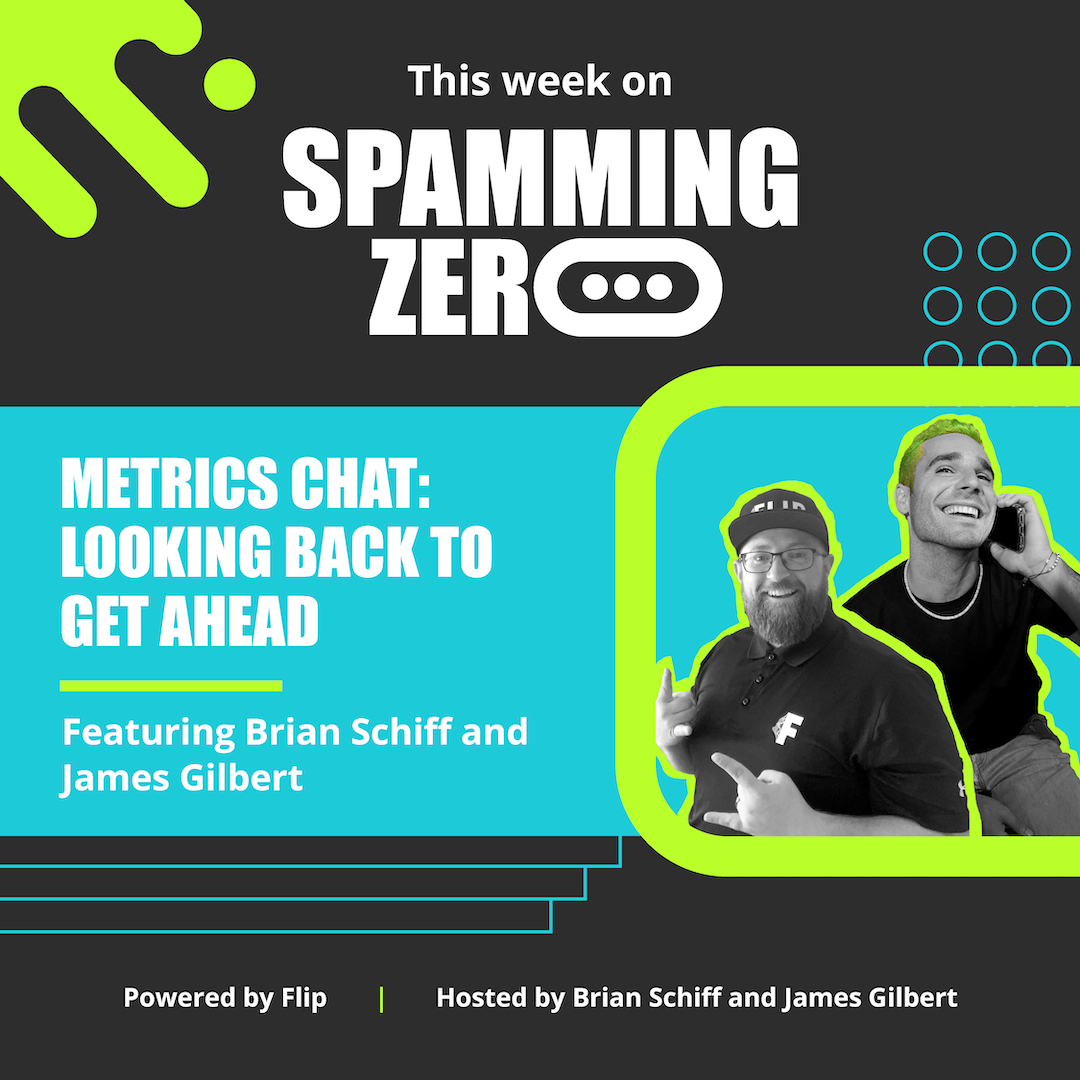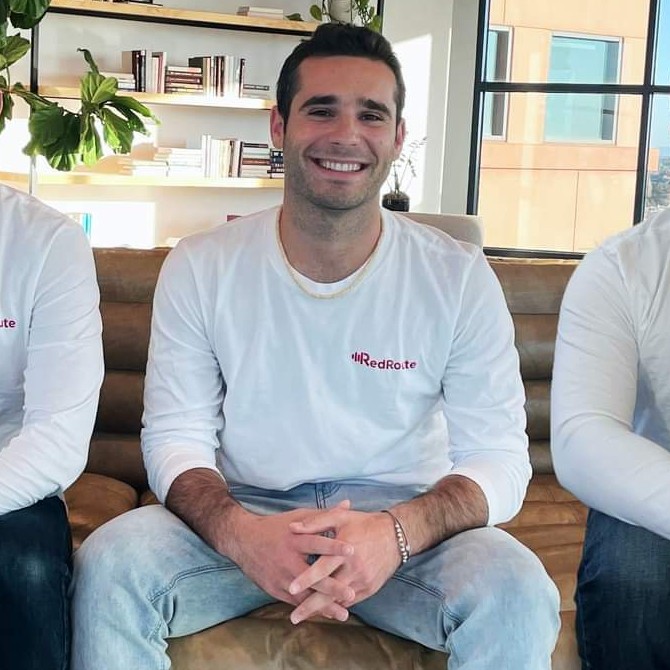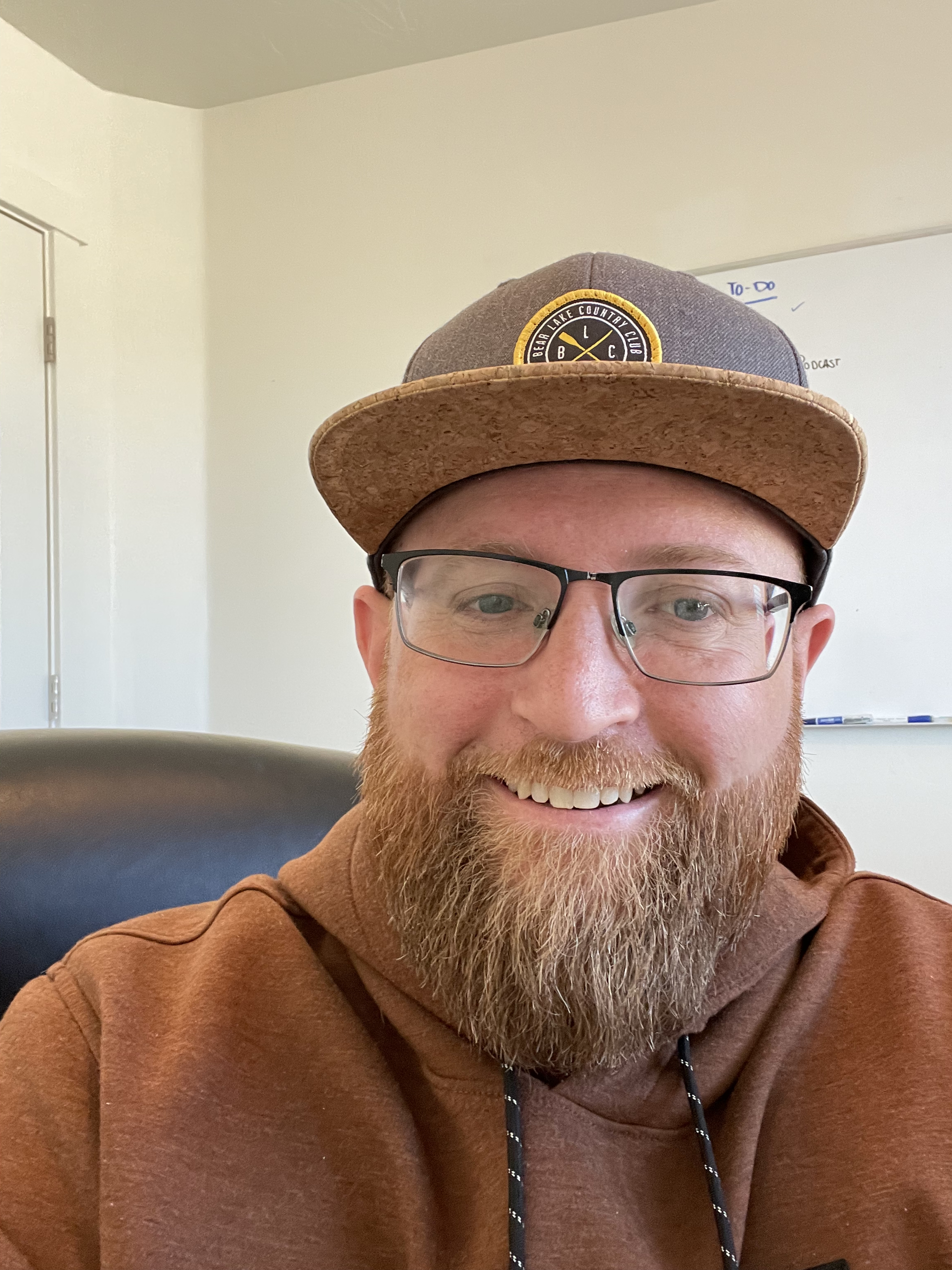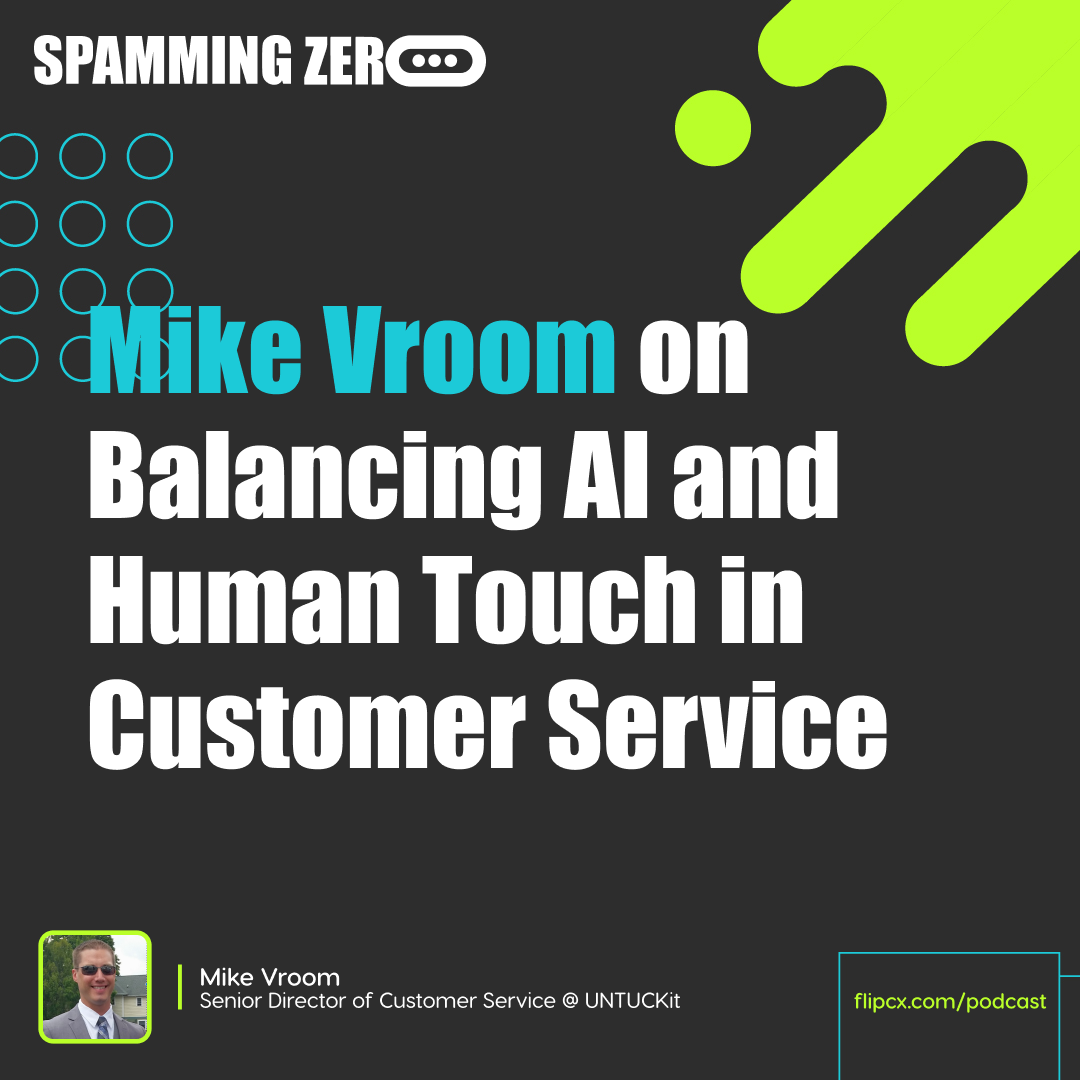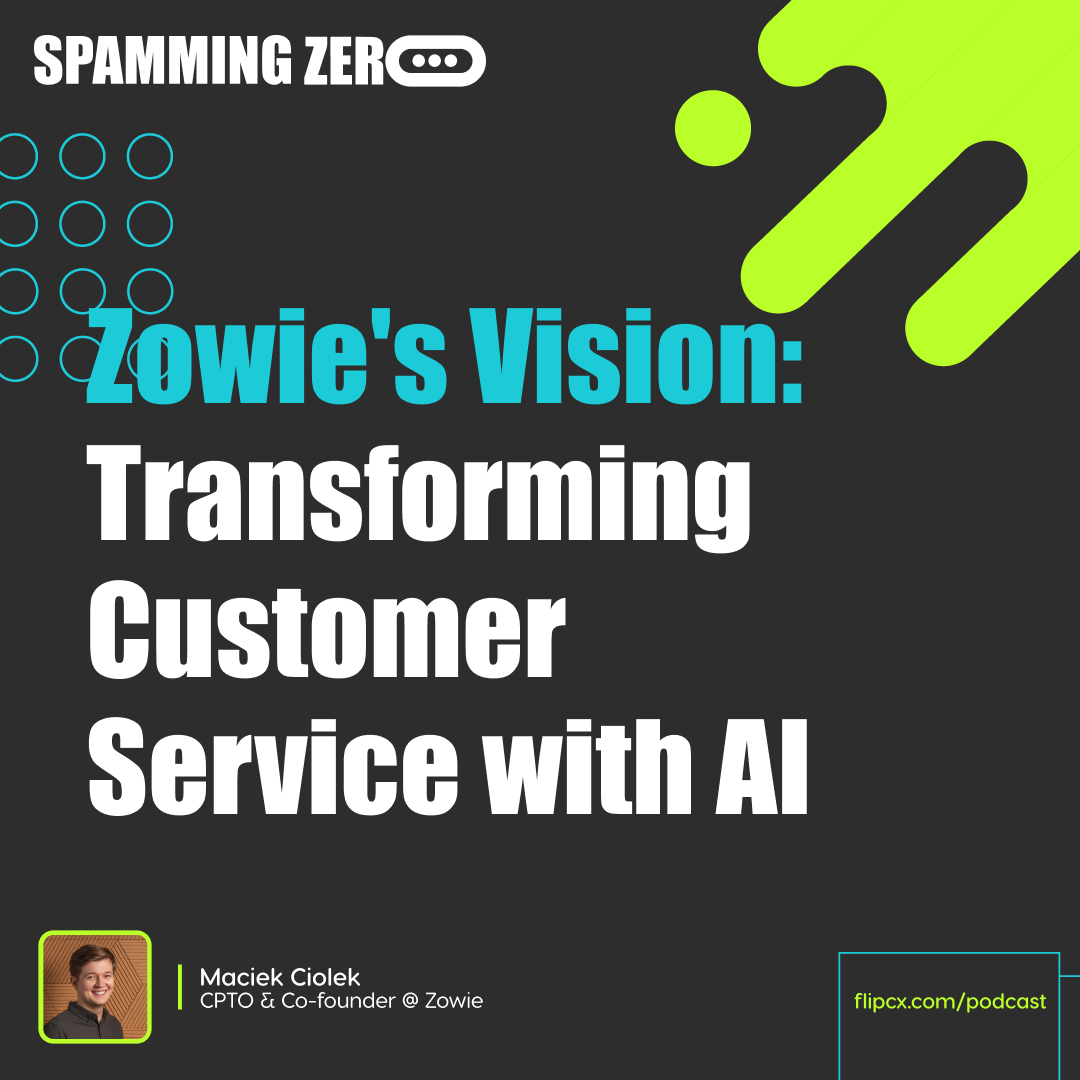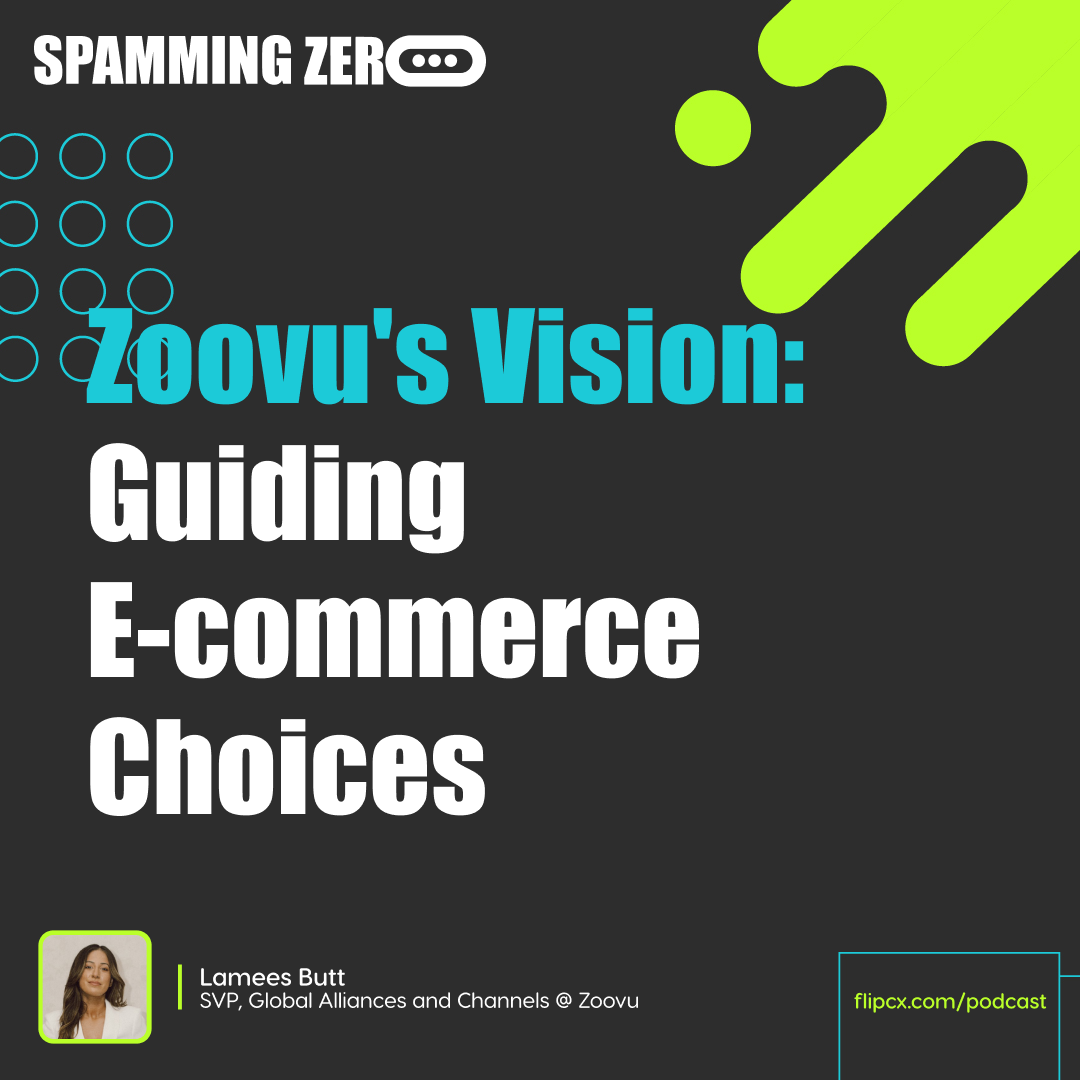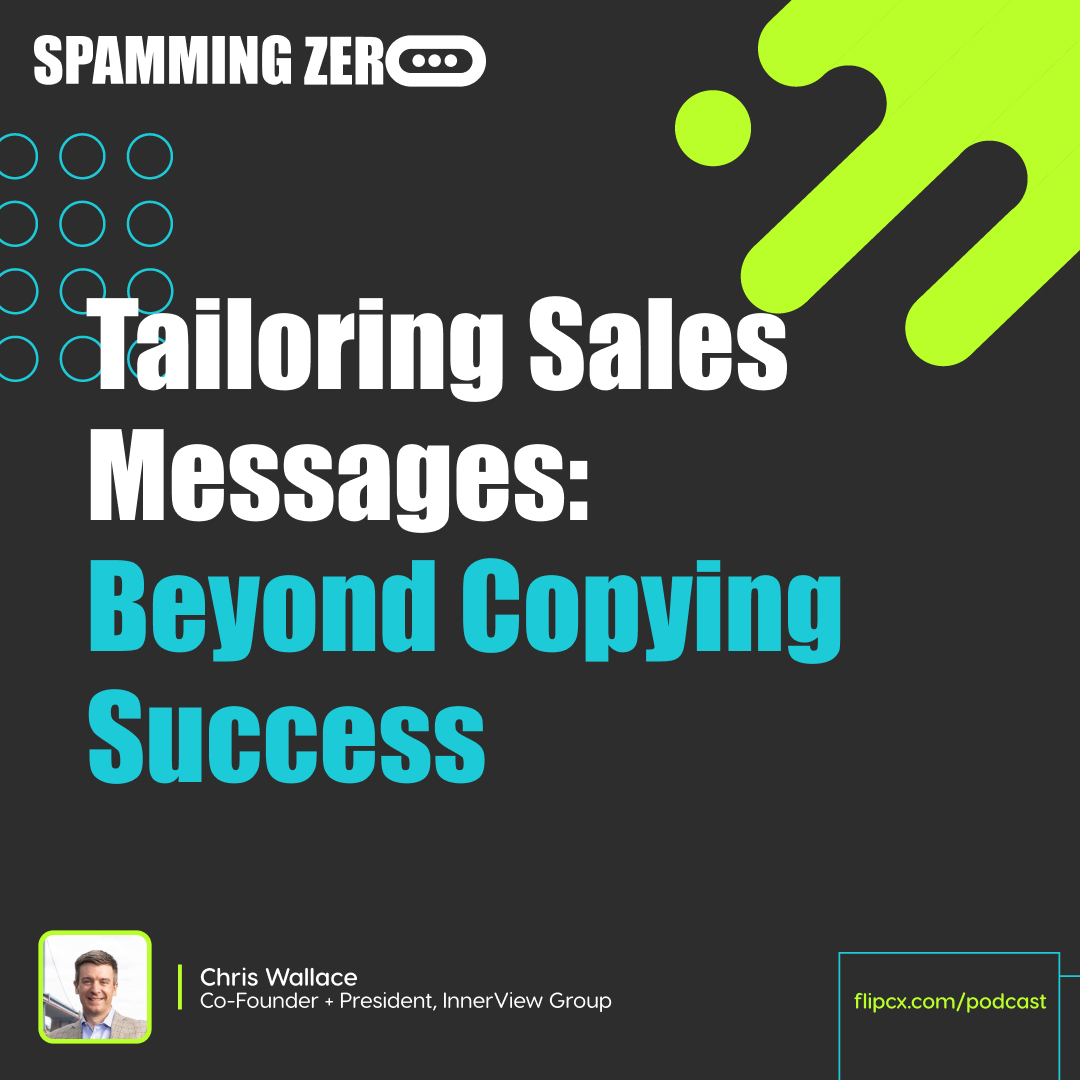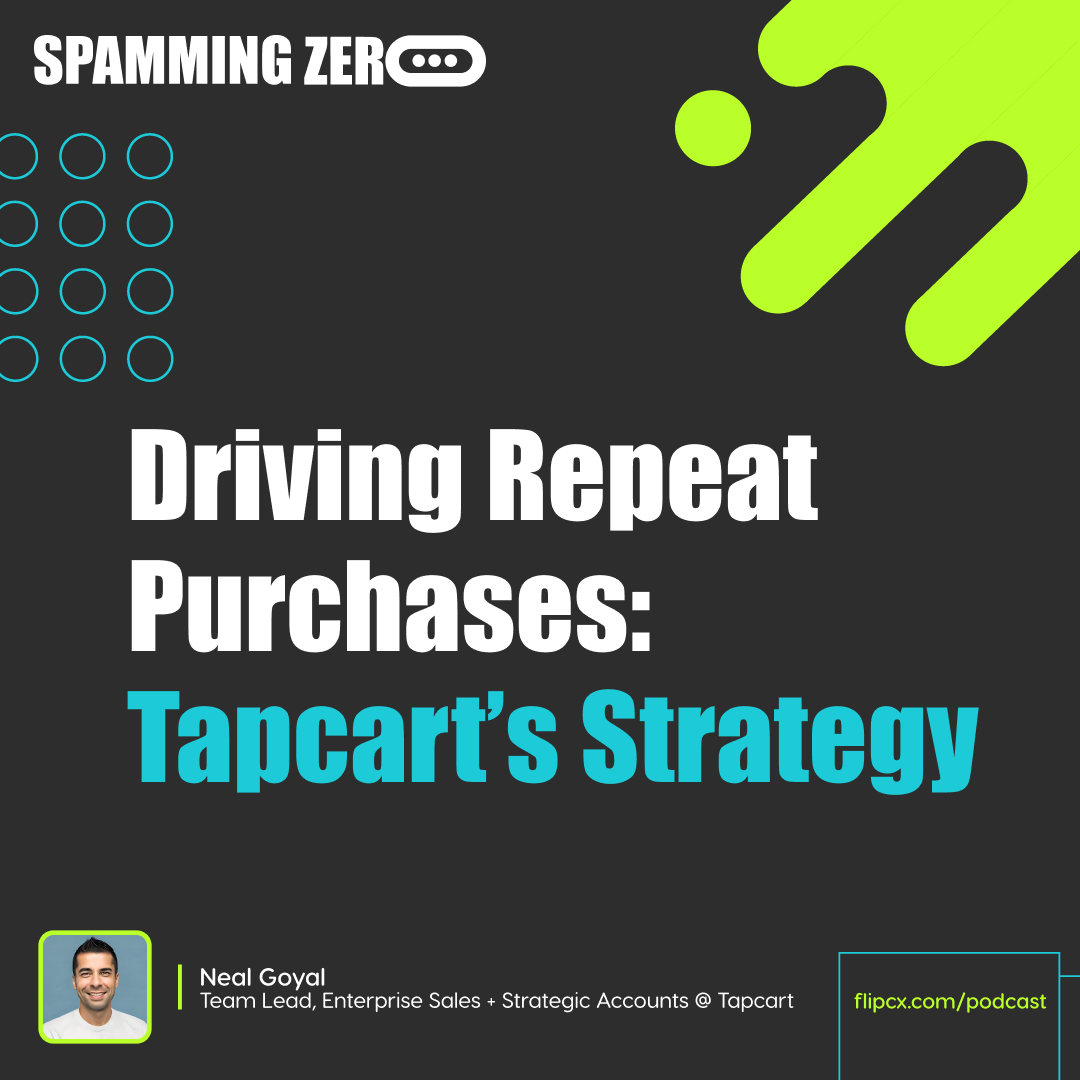Episode 31: Metrics Chat - Looking Back To Get Ahead
- 0.5
- 1
- 1.25
- 1.5
- 1.75
- 2
James: Hey, to all of our listeners out there, this month's sponsor of Spamming Zero is HiOperator. We had Liz Tsai who is their CEO on our podcast just a few weeks ago. If you haven't checked that out, make sure you do that. It's amazing. Great episode. We talked about customer service agents. We talked about lifetime value. Talked about a lot. So who's HiOperator? I'm going to read directly from the website that HiOperator has. This is a beautiful statement. I love what Liz says here. " Customer service is a core pillar of most businesses. It's also one of the hardest parts of the business to scale. Hiring is time consuming. Training is time consuming and volume varies by season and documentation is constantly in flux." All true. Agree a hundred percent. They started HiOperator to make delivering customer service easy. " Our mission is to help companies deliver excellent, scalable customer service effortlessly. Our clients can focus on their products and services and their customers get a great experience when they need help. HiOperator provides a complete customer service as a service solution. Through the power of HiOperators, human plus AI technology, client conversations are handled faster and more accurately." The end result? They deliver amazing customer service making companies and their customers happy. That's why they exist. That came directly from Liz. Here's some other fundamental stuff that I really like that they do. Some value add here. " So train us once. We handle all the recruiting, hiring and training moving forward. Never have to deal with another classroom retaining or head count headaches." They say this, " Send us conversations, send us tickets. We pull the tickets automatically from your preferred CRM and then you have full control over how and when those tickets are used." Another one, paper resolution. This is something we do at Flip as well. Charge for the conversation that we actually solve. No onboarding fees, no hourly rates. Pay for what you use. This is HiOperator. And there this month's sponsor. I'm James.
Brian: And I'm Brian.
James: And this is Spamming Zero. What's up everybody? James and Brian here for another show on the record of Spamming Zero.
Brian: Just me and you this time.
James: Yeah. Turn of the new year, 2023. It's pretty wild. Brian, you may be too young for this, but me being the old fart that I am, I look back in the'90s and the'80s and I never really could fathom 2020. It's such a long ways in the distance probably like you couldn't fathom, I don't know, 2050.
Brian: I don't think our inaudible discrepancy is that big.
James: But you know what I mean?
Brian: I feel that. I mean 2023, that's just mind boggling. But hey, we keep on moving.
James: Absolutely. So one of the things that Brian and I wanted to do in this episode is at the turn of the new year, there's a lot of companies that come out with research reports based on experience that has happened across many brands within the year. So we're going to unpack some of these metrics. When we look at 2022 in particular, we saw a big shift that happened with customer service and customer experience. We saw a lot of brands make a decision that everyone hated. We saw a lot of brands make decisions that they made many, many years ago and are now having ramifications of those decisions. Not to call them out by name but to call them out by name Southwest Airlines. Right? So we're going to unpack some of this because I think it's really fascinating. And the first thing that I noticed, there's a report by Northridge Group, the state of customer experience. You can go find that online. But one of the metrics was 71% of business leaders, meaning those folks that are in their organizations and brand report a positive voice of the customer or a positive NPS. But when they pull those same customers or consumers of that brand, only 67% of the customers say the company is actually trying harder or trying to make it easier for them, which is a big disconnect. You and I have talked a lot about this. This can be a result of a bad metric and it being the wrong type of metrics to see the pulse of what the customer really feels. But I also think it's also a disconnect from a strategy perspective too. So let's talk about that.
Brian: I guess, the first thought is it's not necessarily surprising. A lot of different people do a version of this report and it comes back to sentiment that our good friend Vikas over at Kustomer shares all the time which is given the billions of dollars that have been spent on technology and everything to improve customer experiences over the last decade, consumer sentiment has actually gone backwards. So it's a little bit of like, " Okay, we're running on this treadmill. We're actually spending money." There's certainly a question of whether people are spending enough, but real dollars are being spent and the outcomes are not there with it. So that's one kind of angle on this for me. And then the second one that comes to mind is what you touched on of if the company and their measurements is saying that consumer sentiment has improved, yet the consumers when they're pulled directly is saying that they haven't, then the metric that you're using is actually not good enough. It's actually not capturing what it's intended to capture. And people are well aware of the limitations that exist in CSAT surveys and NPS surveys being the two main ones. Obviously, they are short and simple. They only get shown to consumers at specific points in the customer journey. So are you showing it to somebody right after they purchase or are you showing it to them after their good is experienced or delivered or whatever? Are you showing it to them after a support interaction? So where in the journey you present them with the survey has a huge influence on what the outcomes are going to be. And then the participation rate on these surveys is also very far inaudible from a hundred. Yeah. Not a hundred percent at all and then you can get into the psychology and in some organizations the data around who are the consumers that are choosing to participate in the surveys. So yeah, it's like how good is this data? I don't know. That's where my idea is.
James: I always think it's interesting too because there's a lot of brands out there that they don't do it consistently across brands. If NPS and CSAT was measured at the exact same point in the journey for every brand, then it would make sense. Right? But it's not and it never is. I think the other thing that I find really interesting and I think that a lot of the listeners out there, especially if you are in a customer experience role or you're in a customer service role, I hope what I'm about to say, you take to the bank with you because I think that this is absolutely true. Brian, you and I talk a lot about internally about a crawl, walk, run approach to a lot of the things that we do. Now, a crawl to us, to the external audience that's engaging with our brand, it might seem like misses. A crawl to us is okay, we're going to go from a crawl to a walk face and that's an improvement. And to us internally we would chalk that up as a win. We'd say, " Well, we went from crawl to walk. We made improvements." But externally it could still be seen as a miss. And the reason why I want to bring this up is because no matter what you do out there in the world, you are compared to the very best customer experiences that are out there, you're compared to the Chewys of the world. You're compared to the Amazons of the world and there's nothing you can do about that. Nothing.
Brian: Good point.
James: What you have to do is communicate to your customers about those improvements. If you feel like those are happening, communicate it externally so that your customers and your consumers are seeing the improvement. It's not just what they're experiencing because what they're experiencing may not translate. A great example of this that happened in 2022 was the Southwest Airlines situation that just happened just this last month. Tons of their flights got canceled and everyone was trying to figure out what the heck is going on. Bags were getting shipped to their destinations and these customers were left in airports where their bags were in a completely different destination. I read through this big Twitter thread of a previous employee that was an executive at Southwest and he unpacked the story. It boiled down to one little thing. They were running on a 1990s system and still are today because executive leadership wasn't willing to invest in the technology that was necessary for them to be operationally efficient in the future. So great example of this is brands being worried about automation, brands being worried about bringing on AI to help because they're worried about what's going to happen to the brand or they're worried about what's going to happen to a consumer's experience. Naturally, those are perfectly normal concerns. But we can't get caught into the fact this is a crawl, walk, run. They were in a crawl and we're making improvements but still using a 1990s system that wasn't going to be working for the future. And now they're caught into, " Well, we made improvements but what did the consumer world want?" They wanted an experience that was a run and they weren't getting it. Now, they're having a massive issue with revenue. People don't want to book with Southwest because they don't trust them. Now, you're dealing with a much bigger ramification by simply not getting your leadership, not getting maybe you as an individual in a customer experience or customer service role to be seen and heard on how important it is to invest not just in technology but in things that are actually going to help you be more efficient. Not just now but in the future. And that's one of the things that I think happens more often than not with brands and it gets chopped up to a disconnect between the NPS and CSAT and what the customer says. And that's because we internally think our business is operating and we're improving at better rate than typically as somebody who is engaging with our brand would.
Brian: When you say a 1990 system, really what you're talking about there is... I don't know the systems that necessarily triggered the issues that led to all the flights being canceled, but in the context of customer service and customer experience, almost always that big system jump, that core system jump that needs to happen is at the CRM level, which is where all of the customer transaction and conversation data is stored. That is the most expensive, the most risky and the most painful in every way change to make while also being the one that probably has the most abstract and difficult to measure ROI, which makes it so easy for the executives at a company where things are floating along, things are going well, growth might even be doing fantastically. It's really hard to pay that piper both in terms of time and dollars and risk and make that change. That's where you get caught in these situations of older companies are on older systems even though there's obviously newer systems and the newer companies are on the newer systems because they're making a first decision now. How often those companies are changing, it's always historically been... Right? When you're on that platform, you are so tied in and you're in there forever. As there is so much technology that is being built on top of those core platforms, you mentioned automation and AI, but go into the app marketplace and ecosystem of any of the top CRMs, right? Salesforce, Kustomer, Gorgeous, Gladly, you name it. Go into our marketplace. You can find all of our top partners in that category and their ecosystems of apps are robust. The value that you can get from those which is directly measurable and is much more easy to attain incrementally is unlocked by being on a good, modern, well- structured core CRM backend platform. I don't know. I think that the justification needs to be from, you need to look two steps ahead and then use that as a justification for taking the first step. You almost need to look at the run as justification for doing the walk.
James: It actually reminds me a lot about when we do backwards funnel progression when we're looking at funnels. You look at the number you're trying to hit from a revenue perspective and you work backwards to see what up funnel you need in order to get there. I like that approach.
Brian: What other stats you got for us?
James: We saw a shift that happened in 2022. I think at this point a lot of us are sick of hearing about it and that's the economic downturn. I use that phrase on purpose because that's what everyone's sick of hearing. And because of that, brands have had to do massive layoffs. I'm talking about brands that are public. So we're talking about huge brands. So Salesforce just did one this last week, right? Vimeo did one. We're talking about people that haven't even made it in the public eye, have made cash.
Brian: Almost all of big tech.
James: Yeah. Cisco, you name it, there have been massive layoffs. Now, what type of implication is that going to have on customer experience in 2023? Well, our friends at Help Scout just released a customer service trends of 2023. Go check it out. It's on their website on Help Scout. I think they're onto something here because I do think that naturally with these massive layoffs, one of the very first places people cut is customer service. And the only reason why that is because it is expensive. So when we take what we just unpacked with not being ahead of the times, now businesses are being forced to make the change now because... And I'll give you a little story. There have been several different phone calls that I've been on with, other executives at the C level, mostly CMOs and almost every one of them has had to shift their focus from net new revenue creation to net retention and being focused completely on retention. Some CMOs are so lost in the dark because they don't even know how to handle customer experience because they've never had to.
Brian: So net new revenue is like, " Hey, let's get a customer that's never shopped with us before to come and shop with us. New customer acquisition versus let's have existing customers shop more, stay with us longer if it's some sort of subscription model, upgrade, whatever it might be. But getting more from the base of people that have already bought from you before.
James: Yes. It aligns to one of the episodes we did early on with Dan, if you remember that episode about LTV. This is why LTV has been hit on so hard-
Brian: Like SunValue.
James: Yeah. It just keeps getting hit on and I think it's more important than ever because layoffs are going to continue to happen unfortunately until the economy completely recovers, which isn't going to happen anytime soon. So they're going to continue to happen and as long as they continue to happen, one of the first areas will be customer service and it will suffer, which means the customer experience is going to suffer if you do not find ways to supplement that. So Brian, how do you supplement it?
Brian: Even before going there? So when you talk about customer lifetime value and you talk about focusing more on retention, it's making more from existing customers over time that for a customer to spend more with you, you're talking about them becoming a more loyal customer. And so like CLTV drops one level down to loyalty, which drops one level down to customer experience. Somebody came, they shopped with you. The experience that they had in that first purchase experience, that is what is going to determine whether they're going to come back and shop with you again. And when you talk about where customer service fits in the journey of a purchase, it is almost always and mostly I guess I'll walk back a little bit'cause it's nuanced. Most customer service conversations are happening post- purchase. So they've swiped their credit card. You've attracted some new customer. We're talking about the journey of a new customer. You've attracted them in from the outside world. Everything going on, you've managed to get their attention, sell them on whatever you're selling, get them to swipe their credit card and buy your product. Then there is some issue that is happening or some question or some concern or some idea or whatever it is. Something's happening in between the moment of the credit card swipe to the moment of them being at the end of that experience and being a happy user of the product that they bought. Something is happening that is compelling them to reach out to your business. That is when the customer service conversation is happening. And oftentimes it's because there's an issue. Shipping delays. They got the wrong item. Whatever it might be. And that moment, that conversation, that customer service interaction becomes so important, especially with a first time shopper. They swipe their credit card for the first time with you, now they need something from you. Are you going to be there for them? And then it's just the basics of customer service. People want-
James: Like 24 hours support. Come on, people, give me a break. Just offer it.
Brian: When people are reaching out, it's not a pleasure driven thing. They have something that they need from you. It's a task on their list. They want you to be wherever they're going to find you and they want to be able to solve it quickly. That's the goal. In a world where there's recessionary factors going on, I know that you didn't want to use that word.
James: Everyone uses it.
Brian: And the budget of customer service orgs are being cut, which part of why that happens is because the dollars spent there don't directly drive new sales. It's easier to cut there and the marketing dollars-
James: Or they can't prove that it does.
Brian: Yeah, that's what I mean. Good correction. So in a world where that budget is being cut, 80% of spend in the customer service department is going towards the labor. It's going towards the people that are actually having all of these conversations. So when you talk about cutting the budget, you're really talking about cutting the labor and there's already not enough people to be in every channel all the time and deliver quick resolutions. So then it's like, " Okay, how are you going to do that now? Customer service has already been a problem, you already fail against that consumer expectation bar and now the bar has stayed the same, but the resources have gone down and you need to find a way to fill that gap.
James: The first impression of a consumer's experience with a brand is more important than ever. And to your point, a first time buyer going through the experience, it's crucial to get this right. I got a few numbers that can help back this up. Hanover Research did a bunch of stuff in 2022. Let me just read this. Buyers who have a high quality experience are 2. 7 times more likely to keep going and doing business with the brand. Here's what's crazy.
Brian: By the way, that is CLTV. That's lifetime value. So go on to do more business is that.
James: 2. 7 times more likely. Okay? Now, when you provide quick answers through automation and give them a quick resolution, eight times more likely. Eight times people.
Brian: That's insane.
James: I oftentimes wonder why there is still a fight. Me as a consumer, why there is still a fight for me to... Why we're not offering 24/ 7 support with every single brand in the entire world. It blows my mind why it's still a fight. It drives me wild. I've talked about these stories all the time. I don't call businesses that I need to get ahold of when I'm working. And I work during the day. So by the time that their Eastern Service hours are over, I'm still working. So what the hell are you going to do to help me? Then I have to wait until the weekend spend the time that I'm supposed to be with my family to call your fucking ass? No, I'm not going to do that.
Brian: You're flipping ass.
James: Yeah, that's right. We got to get our together here and realize that we're all consumers of this stuff. I think the more that we in customer service. And I say we because I've been in those shoes before, the more that we can help our leadership understand that they're also consumers. Propose the idea to them and say, " All right. Well, what happens when you have to use your family time because a brand isn't willing to offer 24/ 7 support?" Even if it's through automation, offer it through automation. If you don't have the support stuff, which we just went over that likely it's going to get cut, so use automation to make up for that. And the 24/ 7 support thing can very easily be handled there in many different channels. So I just think that's crazy. 2. 7 times and then with automation eight times. That's wild.
Brian: That's crazy. And that's in a world where really a lot of the automated experiences that are out there fall short, right?
James: Yeah.
Brian: And can cause frustration. But it just speaks to the people want... There needs to be always on availability. And even if it's an automated response, even if it's an automated response, just saying, " Hey, we received your thing. We hear you. I've got your message. The team is going to be back at this time. I understand the severity of it and it's going to be at the top of the pile." Whatever you can say, giving the immediate gratification of listening, which does not need to happen manually, it's just so important.
James: I was unbelievably frustrated with a specific business when I was trying to call them. I couldn't get ahold of them. I tried through their chat. They didn't offer any 24/ 7 support. Their service hours ended at 5: 00 Eastern Time, which is 3: 00 PM my time people. 3: 00 freaking pm. Are you kidding me? No one is going to be able to manage that. I think it's ridiculous. But I was so unbelievably frustrated with this that I thought I was going to have to call them the next day. So I used their final channel, right? Because they offered chat, they offered phone and none of those could serve me. So then they're like, " Well, you could email us after hours and we'll get back to you." So I sent him an email and I got an automated response saying, " We will get back to you first thing in the morning. So I had that expectation because you've already ruined my other expectations, so now you've better make sure that you fulfill the last one." And they did. Even though I was really upset and I was like, " Gosh dang, I just need to get a hold of them. This is a major issue." It still eased my frustration with them and hence why I'm not naming them because they actually fulfilled the last part of their commitment with me.
Brian: At a very simple and human level, in the entirety of the relationship between a brand and a consumer, everything up to the swiping of the credit card is the brand cording the customer and making promises and selling, and doing everything in their power, everything that they can come up with to get attention and making promises, trying to get to that credit card swipe. In the instant that, that credit card is swiped, then the relationship changes. When it comes to customer service, now the feeling on the consumer side is, " I paid you money. My precious money, whatever. I decided to buy your product and now I want you. I want your attention. You freaking spam me. I was getting your Instagram ads. I was getting your freaking mail. I was getting everything from you. You wouldn't leave me alone and now I paid you money and I want something from you because I have not been... What was promise has not been fulfilled." And to run and hide in those moments is just... That is the human explanation of why bad customer service leads to problems with loyalty and brand and lifetime value and growth of the business long term.
James: You're basically leaving them at the altar. I mean, geez, come on, people.
Brian: We're never dramatic here on Spamming Zero.
James: A couple of other trends from our friends at Help Scout that I really love, number four on their list was there will be a greater investment in self- service. 100% agree. More people want to just be able to go in, do what they got to do, which guess what, that means you got to invest in automation. That's just the reality of it.
Brian: Self- service is not just a knowledge base anymore.
James: Yes, exactly. Which by the way-
Brian: That's not sufficient.
James: We'll have to unpack that another day. Number five, we will see growth in proactive customer service. Big shout out to Big Classic Tees, Breanna Moreno.
Brian: True Classic.
James: True classic, sorry. Breanna Moreno does this incredibly well. If you want to unpack that, there was a previous episode we did in December. Go listen to that.
Brian: So many, honestly, a lot of brands doing very well here and doing a good job of being selective with the channel based on what the proactive update is. If you understand what people are reaching out to you about, then you can be proactive when you identify the issue before they identify the issue. You can reach out to them and then understanding what channels to do that in and then leveraging the tools that are there. It's one of the good things that is definitely going on right now, at least in the D2C e- commerce world.
James: Number six on their list, which shouldn't be a surprise because we've been unpacking this already, but AI will be used to make people more effective. You can't hide from it. There is a booming situation in the world right now and AI is being used in every way. So get on board, be okay with it, find a way to let it help you be more efficient. Don't try to fight it and don't try to... Be better than it because it's going to be more efficient than you and it could make you more efficient. So let it help serve you.
Brian: If your Alexa can answer any question that you could ever want to ask it in the entire scope of the internet, then your customer service bot should be able to answer the 20 things that customers are reaching out to you about.
James: That's a really good point, Brian, because you and I talked about this last night. Let's not forget that automation search volume, and I'm, I'm just going to use voice for a second because it's prominent. So it is massively bigger than somebody going to Google and typing something in. Voice search alone is almost four times bigger.
Brian: This is Google data. The amount of Google searches every day that happen via people typing into the browser or their phone or whatever versus speaking their search.
James: Four times. But this is not a small volume. Now, there's probably a good million of those search inquiries that are from my kids asking Alexa 50 questions every day. But that doesn't change the fact that look at who you're serving? A younger audience. So again, this is another way that you can reach an audience that's even younger too, is you provide an avenue that's more accessible to them.
Brian: You say that people hate talking to automation, yet people are... The amount of Alexa devices that are out there and the amount of conversations that are happening, everybody is choosing to use voice basically wherever they can. Whether it's a smart speaker on your smartphone, on your TV, in your car, whatever it is. If there's voice people, if you know what you want, then voice is the fastest route of getting there. That's why we talk to each other. We're not doing a podcast by texting each other. Nobody would want to watch that because it would be way too slow.
James: It's funny how people don't think about some of the channels that they currently consume content and consume just things in general as a channel like a podcast is done through voice. You have to put your headphones on, you have to listen to it. A lot of podcasts don't have video like we do. So it's all done through voice, right? Text, when you drive. You text your loved ones. You are in a car and taking a phone call through your literal speaker of your car. All that is voice. It's wild to me because seeing the last, I would say four or five months with automation and the increase that has happened and just how people are leveraging it, just ChatGPT or whatever it's called, and the adoption that's happening there across just writing is crazy. You're seeing people write music and song lyrics and this is all sorts of different stuff.
Brian: And right before that company, Jasper. ai raised insane round for a business application of AI for the creation of creative assets.
James: I've tested it, it's great. It's not perfect. This is again the evolution of automation. It's not perfect by design because it requires some human intervention. So don't be so afraid of automation that you're not willing to be that intervention that it needs. That's where it's going to help you be more efficient. Imagine that it cuts down two weeks worth of work and research in a single hour for you to then look at, right? Why would you not want to take that two weeks back of time? That's really the key is the time savings that it's going to create not just for you but the consumer and the customer experience.
Brian: Especially in a customer service environment where literally 80% of the budget and probably 90% of the headcount are service providers. They're doing manual tasks and that is the entirety of the department.
James: Totally agree.
Brian: So getting efficiency there is just so big.
James: By the way, you can find a lot of this stuff on online used voice if you want. You can do some searches on that. Tell your Alexa to tell you what the latest 2023 trends are and there's lots of reports or you can Google it on your computer as well. But highly recommend you go take a look at those. If you're in customer service, customer experience and be ready. We're going to end this episode, Brian, by you telling the audience from your perspective, what's a big 2023 trend that you think they should focus on?
Brian: The unfortunate and in a lot of ways, negative side of the recessionary factors that are going on is the cost cutting that needs to happen. I really do think that there's... There's 90% pain, 10% gain in the decisions that businesses need to make and the effect that has on their consumers. But the other pillar of a recessionary strategy is the loyalty focus and the lifetime value focus and the focus on existing customers. I think that the dynamics there are actually the inverse and I think that it's 90% gain, 10% pain. Every business gains a huge amount by focusing on their customers and consumers gain a huge amount by the business focusing on them rather than taking them for granted. So I think that that will reverberate in a lot of different ways. I'm optimistic about the effect that it's going to have on customer service, but I think that it will shine through in a lot of ways and I think that that is the positive side of the coin and I'm a positive guy, so I'll go with that.
James: I'm going to take a marketing approach because I think that there's a lot of marketers out there that might listen to this podcast and might want to hear this as well. I think the more that we can focus on making sure that our messages are really clear and crystal clear so that the consumer and the customer receive what they are being pitched, it will create less issues on the customer service side. I just think the more cohesive and sticky that the messaging gets for the consumer, the better. So I think that that's a big trend we're going to see I think in the next year is a lot of brands from a marketing perspective are going to really focus on making sure that their messaging is really sticky and that it's understood crystal clear by consumers. That's the end of this episode, folks. Hope you enjoyed it. If you like this kind of stuff, you should tell us because we won't continue to do it if you don't like it. We'll just watch the stats and if people like this episode then we'll keep doing it. If they don't, then we won't do it. But hopefully, this was helpful and stay tuned for next week. Appreciate you, Brian.
Brian: Appreciate you.
DESCRIPTION
Hell bent on forging the best possible path for your org in 2023? Well then, it’s always a good idea to take a look at where you’ve been.
And that’s precisely what Spamming Zero hosts Brian Schiff and James Gilbert discuss this week. They talk metrics from the past year, predictions for the year ahead, and a whole lot more - on Flip CX’s Spamming Zero Podcast.
What’s Covered?
- Hot findings from top research reports on CX
- What surveys can and can NOT tell us
- Consumer sentiment today
- The value of ‘crawl, walk, run’ in your CX strategy
- 2022’s economic downturn + how investing in automation can help
- What customer lifetime value really means (and why it matters so much)
- Customer service trends to look for in 2023
- Our hosts’ top recommendations to focus on moving forward
- And more
Ready for more fantastic Spamming Zero conversations ahead? Listen, rate, and subscribe on Casted, Apple Podcast, or Google podcasts.

